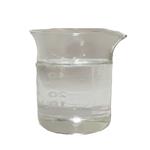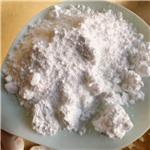2-Pyrrolidinone: Synthesis method and chemical reaction
Mar 11,2024
Description
2-Pyrrolidone, also known as α-pyrrolidinone, α-pyrrolidone, γ-aminobutyric lactam, γ-butyrolactam, γ-aminobutyrolactam, butyrolactam and pyrrolidone, is a derivative of γ-butyrolactone. Molecular formula: C4H7NO, molecular weight: 85.1045.
Chemical reaction
In an aqueous strong acid or base solution, 2-pyrrolidone is hydrolyzed to form 4-aminobutyric acid (A). In the presence of a base, 2-pyrrolidone can be ring-opened and polymerized to form polypyrrolidone(B). Polypyrrolidone is also known as nylon 4, which is a polymer with potential applications in textile fibers, film-forming materials, and molding compounds. The hydrogen atom bonded to the nitrogen atom in the molecule of 2-pyrrolidone is relatively active and is liable to undergo a substitution reaction or a double bond addition. For example, in the presence of a base, 2-pyrrolidone can react with an alkyl halide or a dialkyl sulfate, and the hydrogen connected to the nitrogen atom is replaced by an alkyl group to produce an N-alkyl pyrrolidone (C). 2-Pyrrolidone undergoes an addition reaction with the carbonyl group of an aldehyde to produce N-hydroxyalkyl pyrrolidone (D). The carbonyl group of 2-pyrrolidone is hydrogenated to yield pyrrolidine in the presence of a cobalt catalyst at a high temperature(E).

Synthesis method
Commercial 2-pyrrolidone of industrial grade requires a purity of more than 99.5% and a moisture content of less than 0.1%. There are several processes for the production of 2-pyrrolidone in industry, including hydrogenation and amination of maleic anhydride or succinic acid, ammonolysis of γ-butyrolactone in the vapor phase, and ammonolysis of γ-butyrolactone in the liquid phase. However, the most widely used process is the ammonolysis of γ-butyrolactone in the liquid phase[1].
γ-Butyrolactone and liquid ammonia (or aqueous ammonia) are reacted in the liquid phase at a temperature of 250 to 290 °C and a pressure of 8.0 to 16.0 MPa to produce 2-pyrrolidone with high conversion and selectivity:
The reaction is carried out in the absence of a catalyst. Generally, a tubular reactor operated in continuous mode is used to produce 2-pyrrolidone. The molar ratio of γ-butyrolactone/NH3/H2O is 1: (2.2 to 3): (1.6 to 2.3). The residence time of the reaction mixture in the tubular reactor is usually from 20 to 120 min. The conversion of γ-butyrolactone is close to 100%, and the selectivity to 2-pyrrolidone is higher than 94%. The presence of water in the reaction system improves the selectivity, as in the vapor phase ammonolysis process. The excess and unreacted ammonia is distilled off in a distillation tower and sent back to an absorption tower to be absorbed to a certain concentration for recycling to the reaction system.
References
[1] Li, Sifang. “Manufacture of Fine Chemicals from Acetylene.” 2021. 0.
- Related articles
- Related Qustion
- The uses of 2-Pyrrolidinone Mar 11, 2024
The most crucial use of 2-pyrrolidone is as a raw material for the production of N-vinylpyrrolidone and polyvinylpyrrolidone.
- Introduction of 2-Pyrrolidinone Apr 13, 2022
2-Pyrrolidinone is a natural product found in Capparis spinosa, Ascochyta medicaginicola, and other organisms with data available. Pyrrolidin-2-one is the simplest member of the class of pyrrolidin-2-
1,7-Dimethylxanthine is a naturally occurring alkaloid compound that can enhance alertness and reduce drowsiness.....
Feb 27,2025APIThe most crucial use of 2-pyrrolidone is as a raw material for the production of N-vinylpyrrolidone and polyvinylpyrrolidone.....
Mar 11,2024Organic reagents2-Pyrrolidinone
616-45-5You may like
- 2-pyrrolidinone
-

- $10.00 / 25kg
- 2025-03-31
- CAS:616-45-5
- Min. Order: 1kg
- Purity: 99.5%
- Supply Ability: 100 TON
- 2-Pyrrolidinone
-

- $0.00 / 25KG
- 2025-03-21
- CAS:616-45-5
- Min. Order: 1KG
- Purity: 99%
- Supply Ability: 50000KG/month
- 2-Pyrrolidinone
-

- $50.00 / 1KG
- 2024-10-11
- CAS:616-45-5
- Min. Order: 1KG
- Purity: 99%
- Supply Ability: 20 tons






